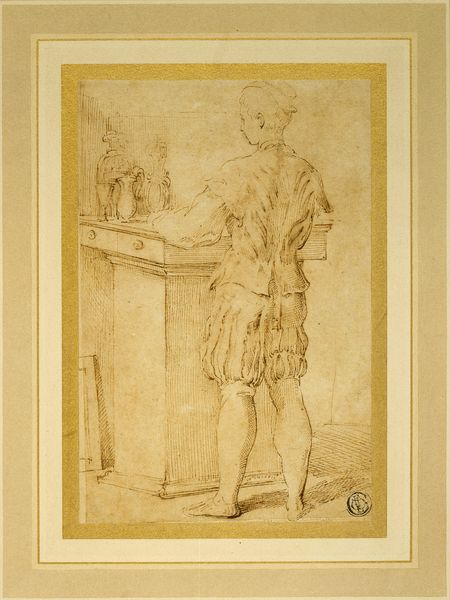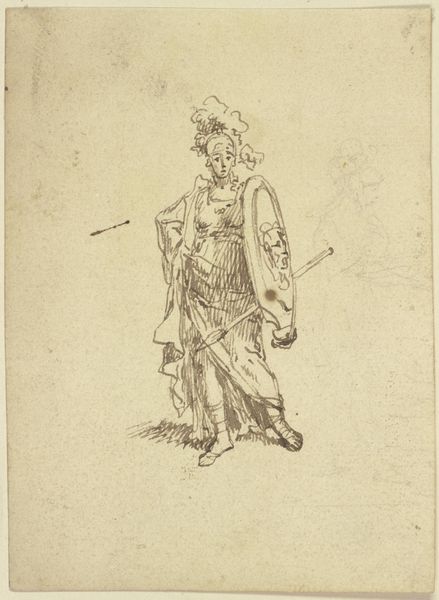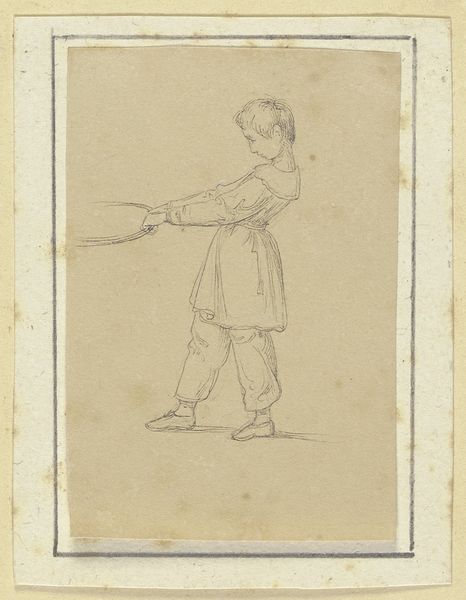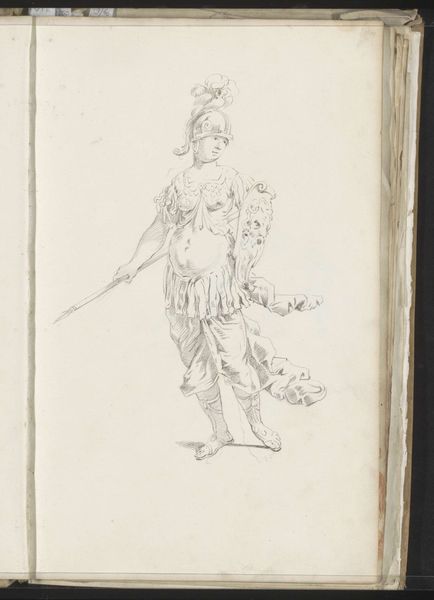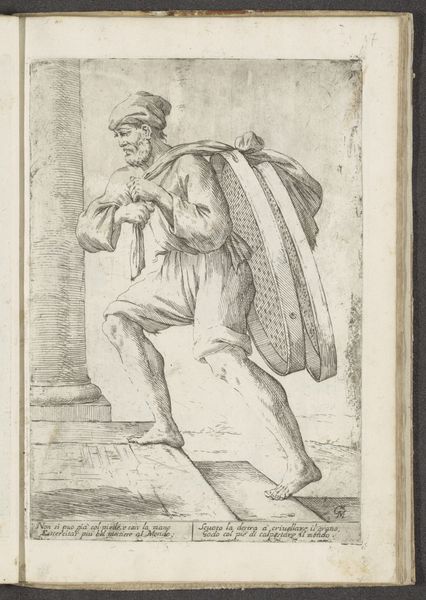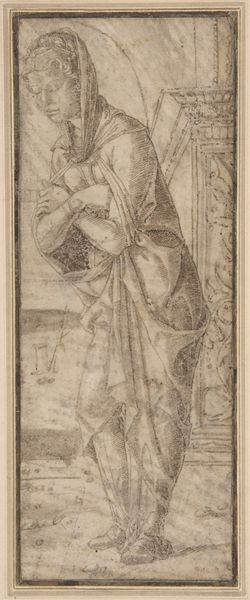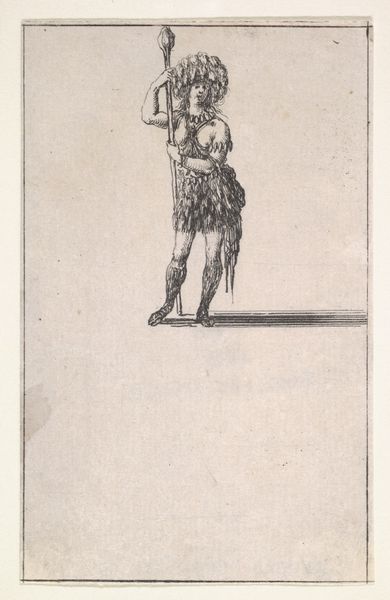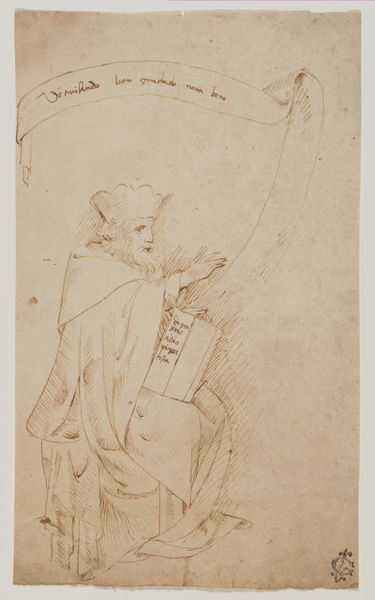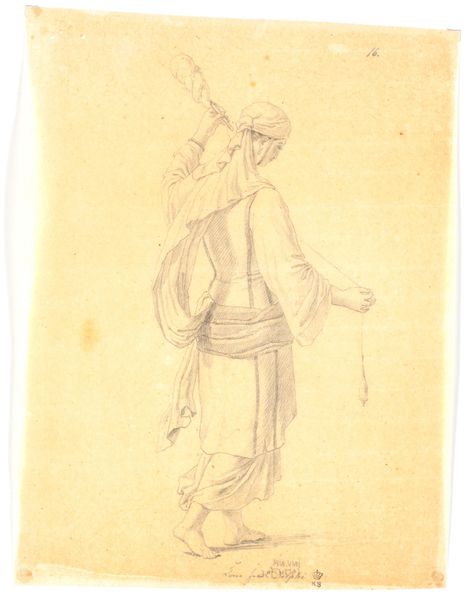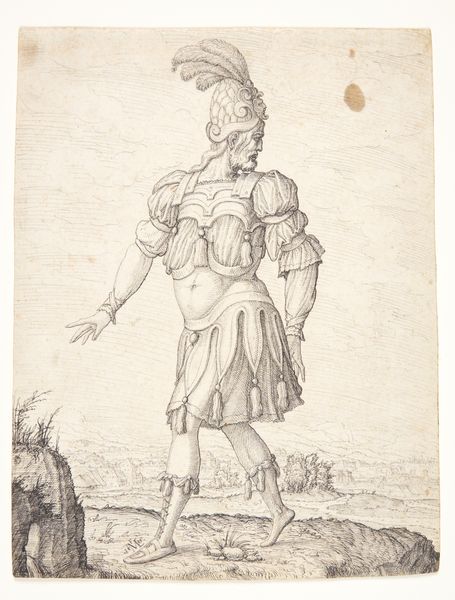
drawing, paper, ink
#
portrait
#
drawing
#
figuration
#
paper
#
11_renaissance
#
ink
#
watercolor
Dimensions: 9 1/8 x 5 3/16 in. (23.2 x 13.1 cm)
Copyright: Public Domain
Curator: This is Federico Zuccaro’s "A Swiss Guard," a drawing rendered in ink and watercolor on paper sometime between 1571 and 1635. Editor: He looks rather… flustered? Is it hot in here, or is it just the heavy ruff collar? I sense a bit of Renaissance drama simmering beneath the surface, despite the sepia tones. Curator: Indeed. Let’s consider the Swiss Guard during that period. Often, these individuals represented more than mere soldiers; they became symbols of political power and religious authority within a fractured Europe. Editor: Makes sense. There's a grid behind him, almost like a backdrop on a stage. Do you think he was in the middle of something when Zuccaro captured his image? Like maybe, interrupted mid-speech? Curator: The grid is an under-drawing for a more finalized painting, used for scaling and proportion. But regarding the Guard's persona, you might be on to something. His gesture with the hand suggests a state of discourse. Swiss Guards had become entrenched in diplomatic relationships beyond their purely military applications. Editor: The little details! I didn't realize just how ornate his clothes are; almost too grand. A signifier of social status. All I can imagine is him constantly worried about getting a spot of marinara on his doublet. Curator: That's an interesting contrast, yes: splendor versus pragmatism. Swiss Guards weren't necessarily noble, per se. So the visual representation, intentionally rendered to indicate rank, speaks volumes regarding self-fashioning in Early Modern Europe. It also reflects the strategies rulers deployed, appropriating imagery and visual vocabulary to communicate prestige through various channels. Editor: It almost seems as though his image has become more about symbolic communication of authority, rather than just an attempt to represent the man himself. Food for thought, certainly. Thanks for this new way to understand it. Curator: Indeed. Considering those strategies might afford us new inroads to art of that period, understanding that a painter like Zuccaro had an acute comprehension of how visual language informed the public sphere. Editor: Absolutely! Gives the whole work a fascinating double-layered edge to consider as one moves through the rest of the exhibition.
Comments
No comments
Be the first to comment and join the conversation on the ultimate creative platform.



